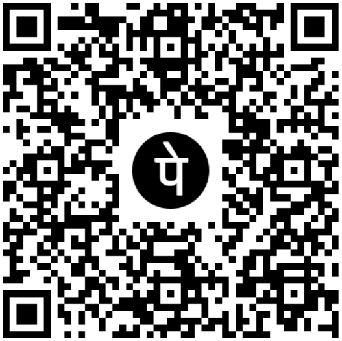Read more
The Data Scientist’s Toolkit in 2025
Remember when the job of a "data scientist" sounded like something out of a sci-fi film? Fast forward to 2025, and it’s one of the most in-demand, real-world careers powering everything from your shopping experience to your healthcare plan. But with the field evolving at lightning speed, today’s data scientist is more than just a number cruncher—they’re storytellers, problem-solvers, and tech-savvy strategists rolled into one. If you’re thinking of joining this field (or staying ahead of the curve), it’s time to update your toolkit.
👤 Who Is a Data Scientist?
At its core, a data scientist is someone who finds meaning in data. They take raw, messy, unstructured information and transform it into insights that drive decisions. Think of them as a translator between data and people—fluent in both technical tools and human impact.
They're part statistician, part coder, part business thinker—and often, the most curious person in the room. Whether working in finance, healthcare, marketing, or tech, they ask important questions and help teams make smarter choices based on facts, not guesswork.
💼 What Does a Data Scientist Actually Do?
Here’s what a typical data science workflow might look like:
-
Ask the Right Questions: What’s the problem we’re trying to solve? What decisions will this data influence?
-
Collect and Clean Data: This could be from spreadsheets, APIs, sensors, customer databases—anywhere!
-
Analyze and Model: Use algorithms and machine learning to uncover trends, patterns, and predictions.
-
Visualize and Communicate: Craft dashboards or reports that clearly tell the story behind the data.
-
Deploy and Improve: Turn insights into automated systems and keep them evolving as new data comes in.
Data science is both technical and intuitive—and that’s what makes it exciting.
🧰 The Must-Have Toolkit for 2025
1. Core Coding Skills: Python & SQL
Python is still the #1 language for data science—and it’s only getting better. With tools like Pandas, NumPy, and Scikit-learn evolving, you'll also want to stay comfortable with async programming, type hints, and package managers like Poetry.
And yes—SQL is still essential. Understanding advanced queries, joins, window functions, and working with cloud data warehouses (like Snowflake or BigQuery) is now the norm.
2. Next-Level Data Processing
Pandas is great—but as your datasets grow, you’ll need to explore:
-
Modin and Dask for scalable DataFrames
-
Apache Arrow for fast, memory-efficient data exchange
Being able to spot performance bottlenecks and optimize workflows is key.
3. Modern Visualization Tools
In 2025, good data storytelling is everything. Go beyond static charts with:
-
Plotly and Altair for interactive visuals
-
Streamlit and Dash for lightweight web apps and dashboards
Visuals should guide the narrative, not just decorate the page.
4. Machine Learning with Real-World Focus
While deep learning gets all the headlines, most real-world projects rely on:
-
Scikit-learn for pipelines and evaluation
-
XGBoost, LightGBM, and CatBoost for tree-based models
-
SHAP and LIME for explainability
Model Ops (MLOps) is growing too. Learn tools like MLflow, Docker, and model monitoring for drift or bias.
5. Data Engineering Know-How
Even if you’re not a full-blown data engineer, you’ll often:
-
Build pipelines with Airflow or Prefect
-
Connect to APIs or cloud services (AWS, Azure, GCP)
-
Work with massive data using Databricks, BigQuery, or Redshift
6. Soft Skills: Underrated but Critical
The best data scientists can translate insights into impact. You’ll need to:
-
Present findings clearly to non-tech stakeholders
-
Write clean documentation
-
Collaborate across teams (marketing, devs, execs)
Don’t just focus on what the data says—also explain why it matters.
7. Ethics, Transparency & AI Accountability
In 2025, ethical AI is a must:
-
Be prepared to address bias in your models
-
Use tools like Aequitas, SHAP, or Fairlearn for transparency
-
Ensure explainability and fairness, especially in sensitive industries
✅ Your 2025 Data Science Stack (Quick Reference)
| Area | Tools/Concepts to Know |
|---|---|
| Languages | Python (async, type hints), SQL, shell scripting |
| Data Processing | Pandas, Modin, Dask, Apache Arrow |
| Visualization | Plotly, Altair, Streamlit, Dash |
| Machine Learning | Scikit-learn, LightGBM, SHAP, XGBoost, model evaluation |
| MLOps & Deployment | MLflow, Docker, Kubernetes, monitoring, CI/CD |
| Data Engineering | Airflow, Prefect, Databricks, BigQuery, API integrations |
| Communication | Storytelling, presentation, dashboards, documentation |
| Ethics & Fairness | SHAP, LIME, Aequitas, explainable AI frameworks |
🔍 Final Thoughts
Being a data scientist in 2025 is less about knowing one tool, and more about weaving multiple skills together: from data wrangling and modeling, to ethics and communication. Whether you’re just starting or leveling up, stay curious, stay practical, and never stop asking, “What can the data teach us?
Job Interview Questions
Top 100 Frequently Asked Data Science Jobs InterviewTough Open-Ended Job Interview Questions
Job Interview Question- What are You Passionate About?
How to Prepare for a Job Promotion Interview
Data Sciences Job Interview Must Know Questions
Python Job Interview Questions and Answers
Data Sciences Job Interview Questions and Answers
Machine Learning Job Interview Questions
RPA Job Interview Questions and Answers




0 Reviews